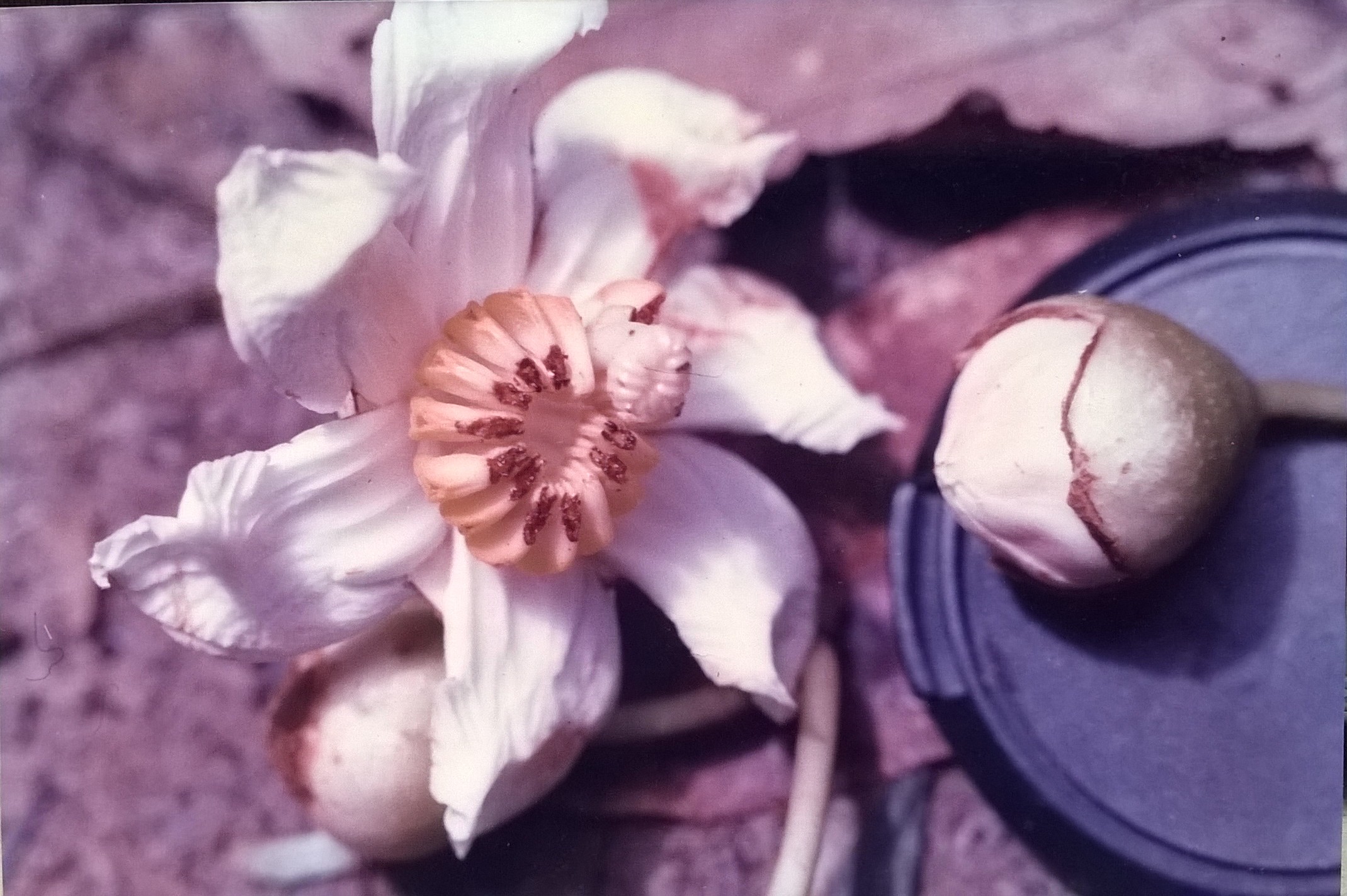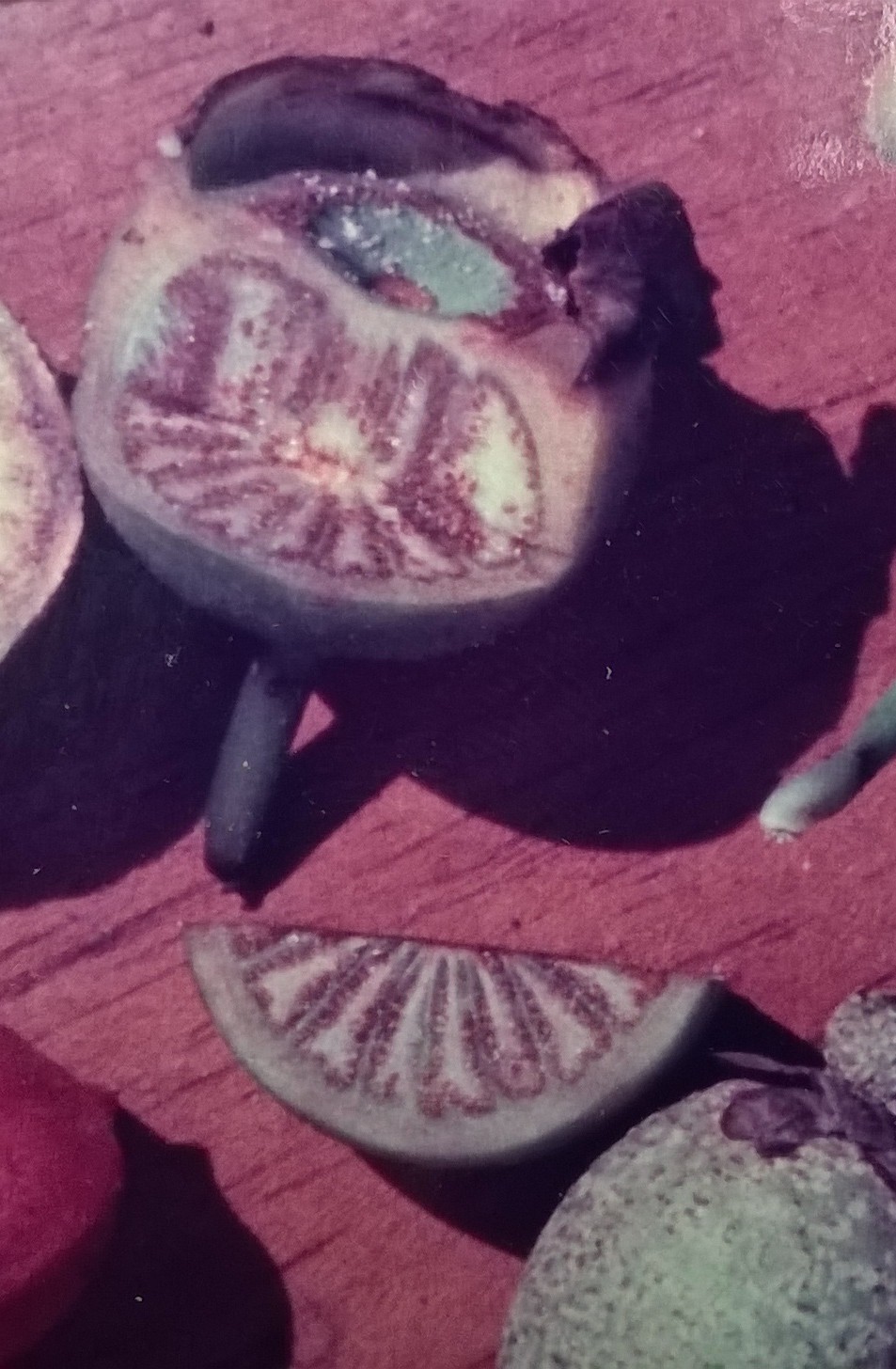Bellucia grossularioides (L.) Triana
Melastomataceae CORONILLO, MANZANA DE MONTANA
Tree: Occasional, evergreen tree (10-15m) found growing in association with secondary vegetation where high levels of insolation are present. It’s large leaves and small, open crown make it fairly easy to recognize. In addition, Bellucia has large, unusual flowers and edible fruits.
Description: A secondary forest tree, Bellucia‘s trunk is never large – usually only about 20 cm in diameter – but it is straight and cylindrical. There is no low branching and the tree’s open crown is composed of relatively few limbs. The bole is clad in smooth, finely textured gray bark. Perhaps its most valuable and identifying feature, Bellucia‘s foliage is extremely large and marked with the typical Melastomataceae vein pattern. Simple and opposite, the leaves are greatly variable in size, measuring from 20-40 cm in length by 10-17 cm in width. Leaf blades are smooth, widely elliptical – almost orbicular – in shape and bounded by a 2-4 cm petiole proximally and a well-developed drip tip distally.
Coronillo flowers (7 cm) are truly magnificent. Found growing directly attached to the bare and foliated portions of the small branches of the crown, each begins as a globular bud whose spirally-arranged and folded, pink-tinged petals are set in a cup-shaped, green calyx whose edges are irregularly divided into rough sepals. Soon they open onto large, daisy-like disks composed of five fleshy and jagged white petals surrounding a yellow core, itself dominated by a ring of large, golf club-shaped stamens and a longer, mallet-like pistil. Older flowers soon shrivel and brown – they are rarely, if ever, found fallen on the ground underneath the tree. Flowering lasts from the very end of May to early September. Fruits (4.5 cm) are pale green and mostly rounded, with the distal end somewhat flattened and still bearing the rough-edged calyx. Inside, a myriad of small (<1 mm) brown seeds are segregated into narrow, longitudinal, citrus-like sections. Fruits ripen on the branches from late August through December.
Similar Species: Miconia argenta is another Melastomataceae that grows to about the same size as Bellucia and sports similar foliage. However, Miconia‘s leaves are markedly two-toned (green above and tan brown below) and much smaller than those of this species.
Natural History: Towards the end of the dry season, Coronillo’s leaves turn yellow, then brown, and subsequently are shed. Within a couple of weeks, a new leaf cover is produced. Flowers are visited and pollinated by a variety of bees and other insects. Fruits are consumed by many species of arboreal and ground dwelling mammals.
Coronillo has an unusual distribution in Manuel Antonio National Park, given that it is only found along the edges of the old Lutz road – now little more than a muddy trail that linked Manuel Antonio Beach with the Lutz ranch to the south of the park. Most likely, this is an introduced species that arrived in the area when cattle were driven along this route after having been disembarked from boats at the beach. These farm animals – having eaten Bellucia fruits before transport – probably left the seeds in droppings as they traveled through what is now the heart of the park (see Xylopia frutescens).
Uses: The fruits of Coronillo are edible and have a pleasingly fresh, though somewhat sour, taste.
Distribution: In Manuel Antonio, Bellucia is found along the edges of the Lutz road, amid the secondary growth that thrives there. It ranges from southern Mexico to Amazonian Brazil and Peru.


